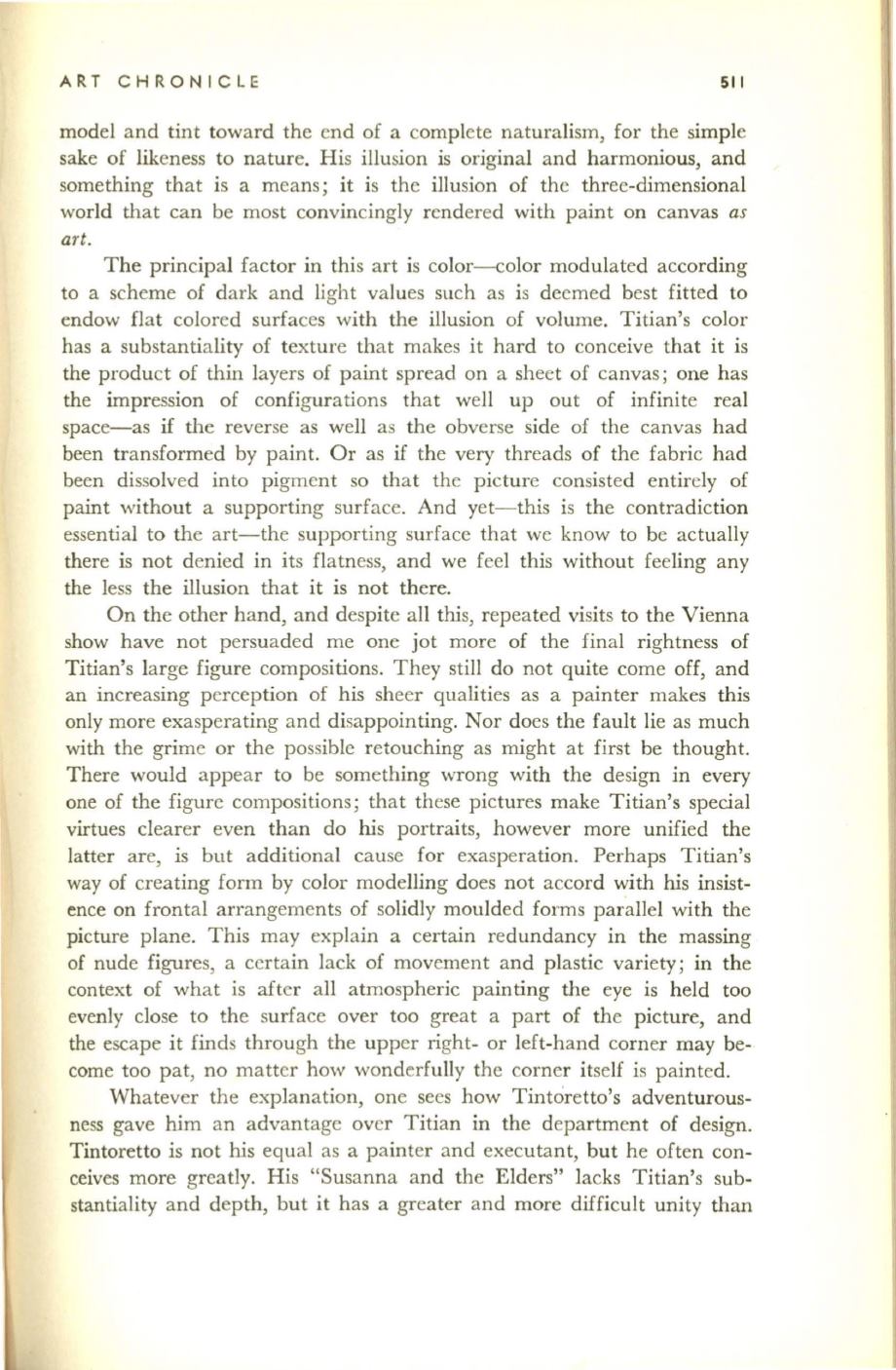
ART
CHRONICLE
511
model and tint toward the end of a complete naturalism, for the simple
sake of likeness to nature. His illusion is original and harmonious, and
something that is a means; it is the illusion of the three-dimensional
world that can be most convincingly rendered with paint on canvas
as
art.
The principal factor in this art is color---color modulated according
to a scheme of dark and light values such as is deemed best fitted to
endow flat colored surfaces with the illusion of volume. Titian's color
has a substantiality of texture that makes it hard to conceive that it is
the product of thin layers of paint spread on a sheet of canvas; one has
the impression of configurations that well up out of infinite real
space-as
if
the reverse as well as the obverse side of the canvas had
been transformed by paint. Or as if the very threads of the fabric had
been dissolved into pigment so that the picture consisted entirely of
paint without a supporting surface. And yet- this is the contradiction
essential to the art-the supporting surface that we know to be actually
there is not denied in its flatness, and we feel this without feeling any
the less the illusion that it is not there.
On the other hand, and despite all this, repeated visits to the Vienna
show have not persuaded me one jot more of the final rightness of
Titian's large figure compositions. They still do not quite come off, and
an increasing perception of his sheer qualities as a painter makes this
only more exaspcrating and disappointing. Nor does the fault lie as much
with the grime or the possible retouching as might at first be thought.
There would appear to be something wrong with the design in every
one of the figure compositions; that these pictures make Titian's special
virtues clearer even than do his portraits, however more unified the
latter are, is but additional cause for exasperation. Perhaps Titian's
way of creating form by color modelling does not accord with his insist–
ence on frontal arrangements of solidly moulded forms parallel with the
picture plane. This may explain a certain redundancy in the massing
of nude figures, a certain lack of movement and plastic variety; in the
context of what is after all atmospheric painting the eye is held too
evenly close to the surface over too great a part of the picture, and
the escape it finds through the upper right- or left-hand corner may be–
come too pat, no matter how wonderfully the corner itself is painted.
Whatever the explanation, one sees how Tintoretto's adventurous–
ness gave him an advantage over Titian in the department of design.
Tintoretto is not his equal as a painter and executant, but he often con–
ceives more greatly. His "Susanna and the Elders" lacks Titian's sub–
stantiality and depth, but it has a greater and more difficult unity than


